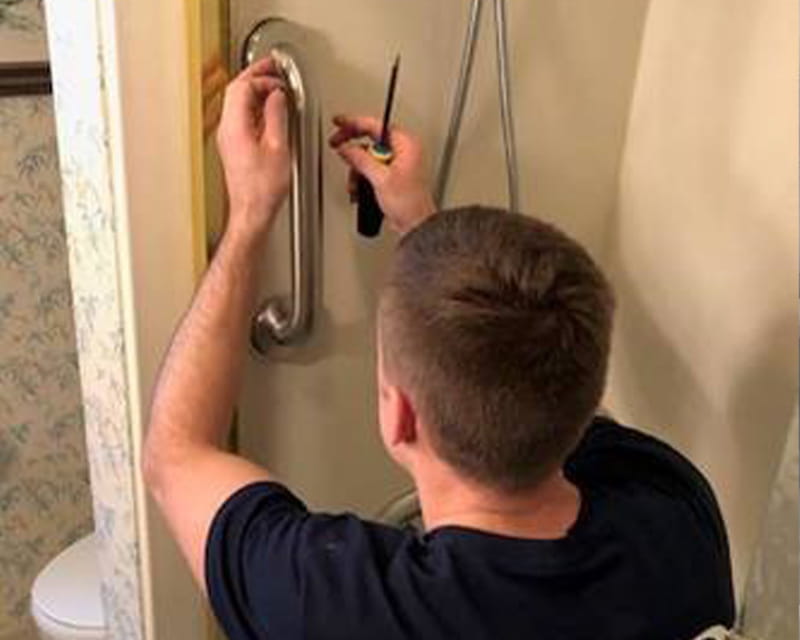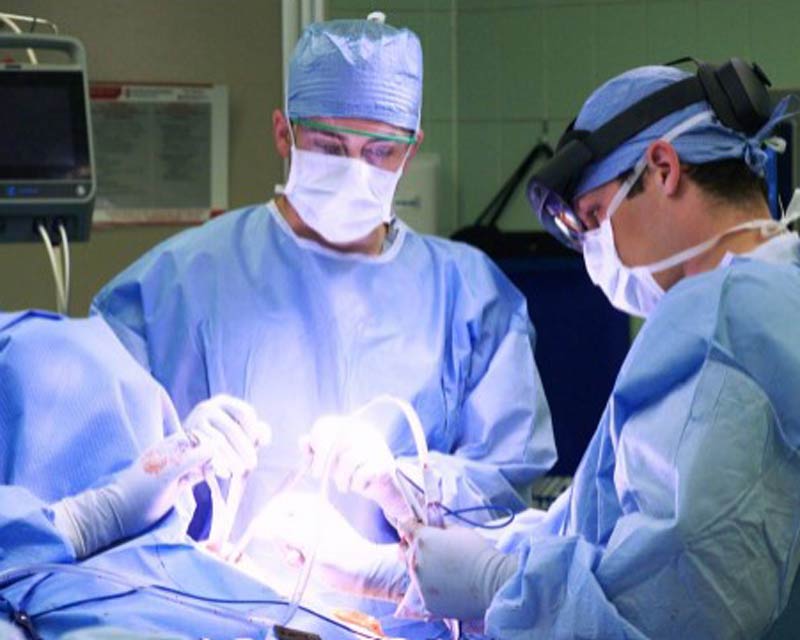
improving patient care
 Intuitive digital mixed-reality system takes surgery to the next level at The Ohio State University Wexner Medical Center
Intuitive digital mixed-reality system takes surgery to the next level at The Ohio State University Wexner Medical CenterA new 3D hologram system lets orthopedic surgeons at The Ohio State University Wexner Medical Center be more precise when performing shoulder replacement surgery.
Stryker’s Blueprint mixed-reality technology uploads a digital 3D holographic view of a patient’s pre-operative plan onto headset glasses worn by the surgeon.
“It feels like you are Iron Man moving and referencing the virtual images,” Gregory Cvetanovich, MD, an orthopedic surgeon and shoulder specialist at the Ohio State Wexner Medical Center, says.
Surgeons can put that holographic image right next to the patient’s shoulder as they position implants during surgery. The technology provides a way to more closely personalize shoulder replacement surgery based on each patient’s unique anatomy.
“You can move the hologram around, you can click right next to the patient’s shoulder, you can compare and contrast and we can really make sure that we give them the best replacement that we can,” Cvetanovich says.
He performed the first shoulder arthroplasty mixed-reality procedure at Ohio State in April 2021. The Blueprint system is in use at just 15 sites nationwide under a limited release.
“The system is very intuitive to use and takes very little practice,” Cvetanovich says. “I practiced on a model shoulder in the lab and felt comfortable to start using it in surgery.”
In a regular shoulder replacement, doctors use the results of a computerized tomography (CT) scan of the patient’s shoulder to choose the replacement implant. These details are entered into a computer program to create the preoperative plan. During surgery, doctors typically consult the pre-op plan on a flat, 2D computer screen or a printout affixed to the wall.
The hologram system turns those plans into a 3D image, which can help surgeons better prepare for surgery. The digital 3D image comes to life in the operating room. It provides more precision and reduces the chance of human error. That’s because doctors can manipulate the hologram in real time during surgery, adjusting and making changes as needed based on what they see within the patient’s native anatomy.
Surgeons use hand gestures and voice commands to optimize the position of the 3D models as they work to replicate the pre-operative plan as closely as possible during surgery.
“Technology like mixed reality gives us an opportunity to significantly reduce variability in the way surgery is performed, which can help reduce complications and improve overall patient outcomes,” Cvetanovich says.
About 53,000 people in the U.S. have shoulder replacement surgery each year, according to the Agency for Healthcare Research and Quality.
Advancements that mixed-reality 3D holograms provide include:
Mixed reality is likely to transform shoulder arthroplasty and orthopedic procedures where precision is critically important, like spine surgery and joint replacements, says Cvetanovich, especially “as future developments allow guidance calibrated with instruments to ensure ideal placement of the arthroplasty components.”
The 3D holographic image shows what the surgeon can’t see inside the body. This helps improve surgical accuracy and can significantly reduce surgeries where the implant is placed way out of line.
The technology also allows surgical staff, residents and patients to view the planned operation from the surgeon’s vantage point. This helps everyone better understand the operation, Cvetanovich says. The surgical team and trainees also can view the procedure in real time.
Cvetanovich expects mixed reality to change how surgeons are trained, affect how patients understand the procedure and improve shoulder, spine and other joint replacement surgeries overall.